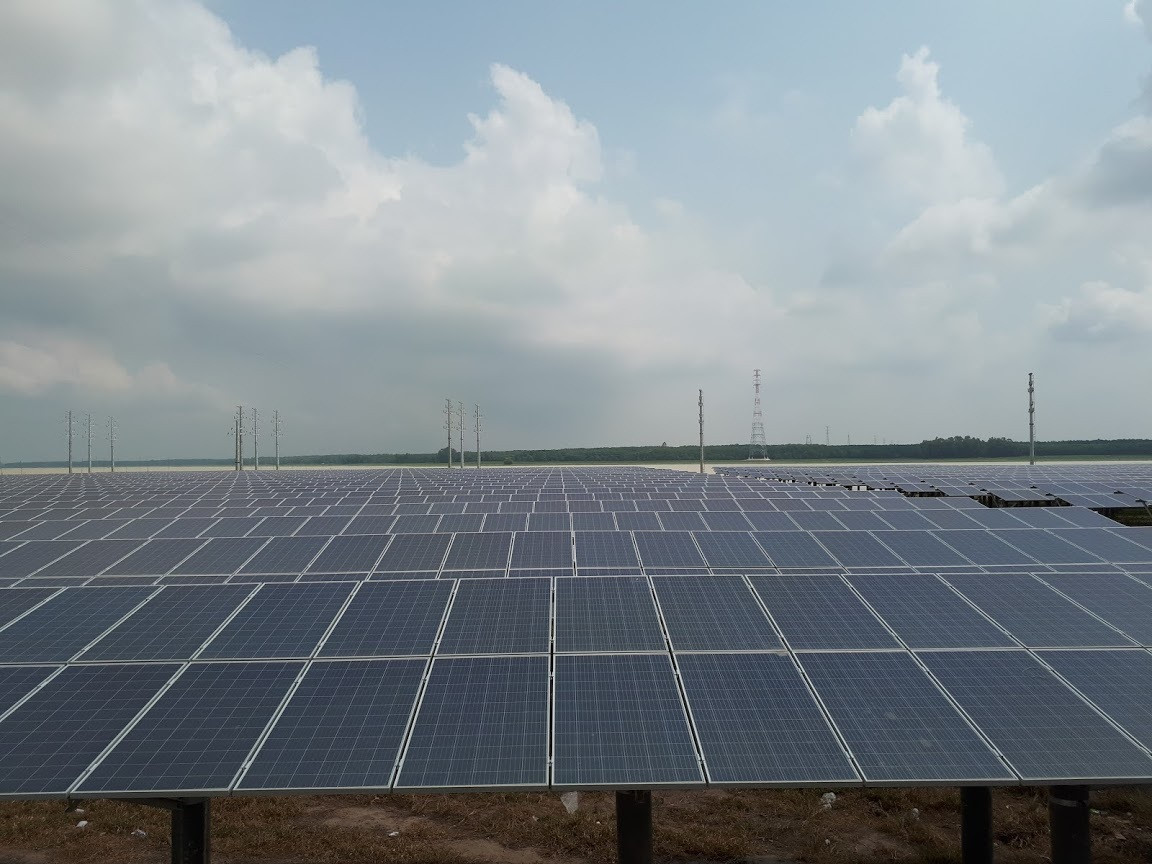
On January 24, at the 4th summit of the Vietnam Energy Partnership Group (VEPG), Mr. Dang Hoang An emphasized that the Government has stepped up and is determined to carry out structural transformation of the energy industry in the spirit of mobilizing internal resources and cooperation and support from development partners.
According to the official, in recent years, thanks to the Vietnamese Government's encouraging policies, renewable energy sources have developed strongly.
By the end of last year, the total installed capacity of renewable energy sources reached 20,670 MW, accounting for 27% of the total installed capacity of the whole system (76,620 MW); electricity output from renewable energy sources reached 31,508 billion kWh, accounting for 12.27% of the total electricity production of the whole system.
Vietnam has 70 wind power projects (with a total capacity of 3,987 MW) in commercial operation, with electricity output in 2021 reaching 3.34 billion kWh, accounting for 1.3% of the total electricity output of the whole system.
Regarding solar power, the electricity output in 2021 accounted for about 10.8% of the total electricity output of the whole system. The total installed capacity of biomass and garbage electricity was 321 MW by October 2021. In a difficult year due to the epidemic, these are encouraging numbers.
The restructuring of the electricity and energy sectors has been directed drastically along with the promotion of restructuring and improving the efficiency of state-owned enterprises, equitizing and divesting state capital in SOEs, building and gradually forming a competitive electricity market at all levels according to the approved roadmap.
At the same time, Vietnam is promoting the National Program on economical and efficient use of energy, phase 3.
Sustainable energy transition
In addition to the favorable factors, Vietnam must implement solutions to ensure energy security while minimizing the environmental impact of power generation activities.
The demand for energy use has constantly increased at a double-digit rate, with 13% in the period 2000-2010 and 10.5% in 2011-2019. Particularly, in 2020 and 2021, the growth rate was lower due to the impact of the Covid-19 pandemic.
The country faces the risk of a shortage of electricity for economic development due to limited primary energy supplies, leading to an increasing dependence on imported fuels, especially fuels for electricity generation.
Therefore, the long-term, sustainable and suitable energy industry development strategy plays a key role in the development orientation of the energy industry.
Resolution 55-NQ/TW of the Politburo, issued on February 11, 2020, shows the Party's line on the strategic orientation of national energy development to 2030, with a vision to 2045.
The Ministry of Industry and Trade is concretizing the development strategy for the energy industry by formulating and completing the Power Development Plan 8, the National Energy Development Master Plan, and the Vietnam Coal Industry Development Strategy. These are fundamental projects that create a premise to promote the development of the energy industry in general and the electricity industry in particular.
In the next phase, the goal set for Vietnam is moving towards a sustainable energy transition.
Dr. Ngo Duc Lam, independent energy expert for Vietnam Alliance for Sustainable Energy, former Deputy Director of the Institute of Energy, said: “Vietnam has made strong commitments to respond to climate change, towards the net zero emission by 2050. When the Prime Minister made such a commitment, it must be grounded. That base is renewable energy, mainly wind and solar.”
Wind power does not take up much land, which is opposite to solar power. The wind turbines and equipment do not use much land space. This means that the land used to house the turbines can also be used for other purposes, such as agriculture.
Also, unlike coal, natural gas or oil, wind turbines do not require burning any fossil fuels to operate. The source of wind energy never runs out, because wind occurs naturally in the atmosphere.
Now, wind power is also produced on the sea surface, using offshore wind to generate electricity. Many countries are concentrating on offshore wind power. Offshore winds have great potential and are more stable than onshore wind. But making offshore wind power requires a solid foundation, so it depends on many factors. Along with the development of new technology, the price of wind power will be much cheaper.
According to the latest Power Plan 8 submitted by the Ministry of Industry and Trade to the Government, the maximum capacity forecast (Pmax) in 2025 is about 59,300-61,400 MW; around 86,500-93,300 MW by 2030; about 155,000-189,900 MW in 2045.
On that basis, the Ministry proposes to select the option for total power capacity of about 146,000 MW by 2030 and about 343,000 MW by 2045 (excluding the existing rooftop solar power source of about 7,755 MW and other sources of electricity).
Compared with the revised Power Plan 7, coal-fired power capacity is reduced by about 14,800 MW.
Luong Bang - Kien Trung